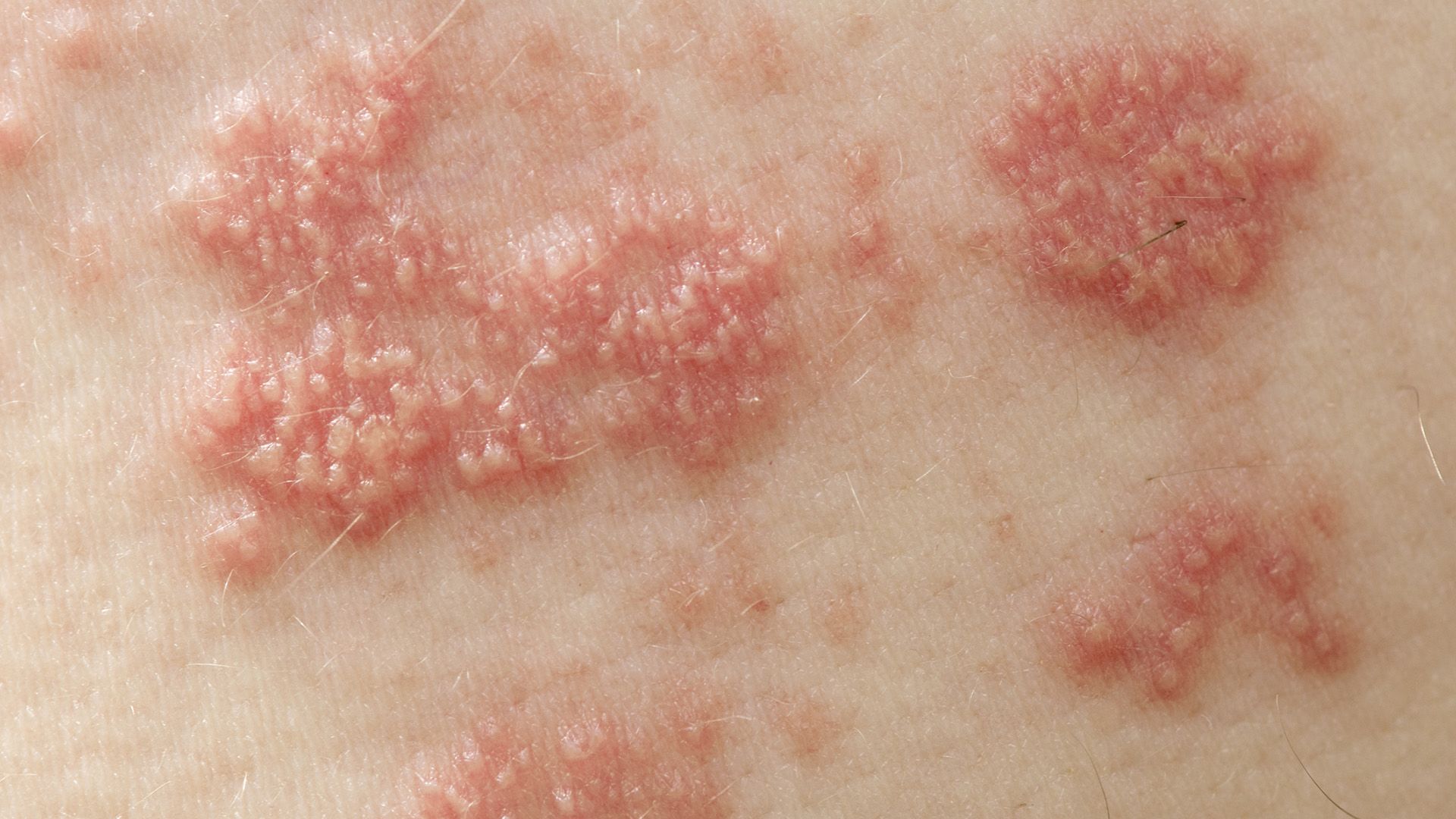Updated on March 1, 2021
It’s estimated that one in three people will experience shingles in their lifetime. Shingles is a viral infection caused by the varicella-zoster virus (also called VZV), the same virus that causes chickenpox. Anyone who has had chickenpox is at risk of having shingles—which is most people, since it’s estimated that 99.5 percent of American adults over the age of 40 have had chickenpox whether they realize it or not.
After a case of chickenpox clears up, VZV remains in the body in an inactive state. At some point in the future, VZV can become active, causing shingles. Risk increases with age, and the majority of shingles cases occur in adults over the age of 50.
Shingles can occur anywhere on the body, but most often appears as a stripe on one side of the torso, following the path of a nerve fiber. For many people, the first symptoms are pain, tingling and/or itching in the area that will be affected by shingles. This is followed by the formation of a rash of pus-filled blisters that are the most recognizable symptoms of the infection. Blisters usually scab over in a week to 10 days, but can take a few weeks to clear up completely.
Lingering after effects of shingles
Here are some of the shingles complications that can occur, some which can stick around long after the rash has cleared up.
Bacterial skin infections
Shingles blisters can become infected with bacteria, though this only happens in about 2 percent of cases. Infected blisters take longer to heal and may leave scars. Follow your healthcare provider’s instructions for keeping the infected area clean, and avoid scratching at the rash—scratching shingles blisters can increase the risk of a bacterial infection.
Postherpetic neuralgia
Also called PHN, postherpetic neuralgia is nerve pain that continues after the shingles rash clears up. It occurs in the same area that was affected by the shingles rash and is the most common complication of shingles. Like shingles itself, the risk of having PHN increases with age. Symptoms of PHN can include sharp and sudden pain, itching, numbness, extreme sensitivity to touch and a constant burning and aching sensation. PHN can last weeks to months, and in rare cases, years.
Eye complications
The most common place for a shingles rash to occur is on the torso, but it is not uncommon for patients to experience the rash on other parts of the body, including the face. A shingles rash around the eyes should be evaluated by an eye specialist as soon as possible since it can cause inflammation of the eye and the retina (the light-sensitive layers of tissue toward the back of the eye that convert light into nerve signals). These complications can result in permanent damage to the affected eye and vision loss.
Neurological problems
A shingles rash that occurs along the nerve fibers of the face can cause a number of neurological complications. Though not common, these complications can include severe pain in the ear, vertigo, difficulty maintaining balance, hearing loss and facial paralysis. In some cases, hearing loss and facial paralysis may be permanent or may not resolve completely. In rare cases, shingles can result in inflammation in the brain (called encephalitis).
Preventing complications
The only known way to prevent shingles—and by extension, the complications associated with shingles—is by getting the shingles vaccine. The Centers for Disease Control and Prevention currently recommends shingles vaccination for adults over the age of 50. This includes those who have had shingles previously and those who have had a previous shingles vaccination, since there is a newer vaccine that is more effective at preventing shingles. If you are 50 years of age or older, speak with your healthcare provider about getting vaccinated against shingles. Many pharmacies offer vaccination services, including the shingles vaccine.
If you or a loved one gets shingles, it is important to seek treatment immediately—antiviral treatments can reduce the duration of the infection and ease symptoms, but must be started within the first 72 hours in order to be effective.





